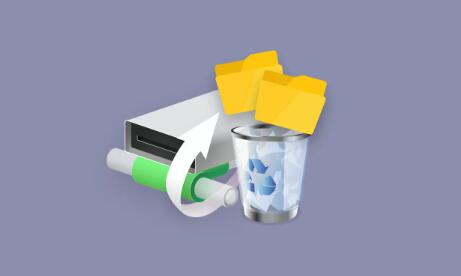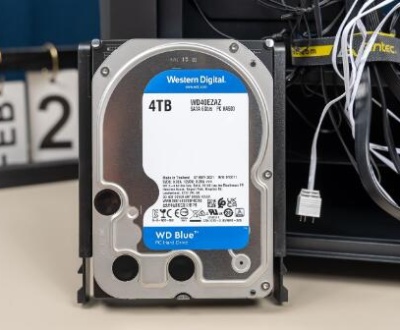Recovering deleted files from a network drive can be a complex process, but with the right tools and techniques, it is possible to retrieve lost data.
1. Network Drives
1.1 What is a Network Drive?
A network drive is a storage device on a local area network (LAN) that allows multiple users to access and share files. Network drives can be found in various environments, such as offices and schools, where they facilitate collaboration and data sharing.
1.2 How Data is Stored on Network Drives
Data on network drives is stored on centralized servers, which manage the storage and access to files. These servers often use RAID (Redundant Array of Independent Disks) configurations to protect against data loss and improve performance.

2. Reasons for Data Loss on Network Drives
Understanding the reasons for data loss can help prevent future occurrences. Common causes include:
Accidental Deletion: Users may accidentally delete important files.
Network Issues: Connectivity problems can lead to data corruption.
Malware Attacks: Viruses and malware can corrupt or delete files.
Hardware Failure: Failures in the server or storage devices can result in data loss.
User Error: Improper handling of files can lead to loss.
3. Initial Steps for Recovery
Before diving into recovery methods, it’s essential to follow these initial steps:
3.1 Stop Using the Network Drive
Immediately stop using the network drive to avoid overwriting the deleted files. This is crucial because once data is overwritten, recovery becomes significantly more difficult.
3.2 Assess the Situation
Determine how the files were deleted and whether they were part of a shared folder. This information can guide your recovery approach.
3.3 Check the Recycle Bin
If the network drive is mapped to a local computer, the deleted files might be in the local Recycle Bin. Check there first:
Open the Recycle Bin on your desktop.
Look for the deleted files.
If found, right-click and select “Restore” to recover them.
4. Recovery Methods
4.1 Method 1: Using Backup Solutions
Many organizations use backup solutions to regularly save data from network drives. Check if your organization has a backup policy in place:
Restore from Backup: If backups are available, restore the deleted files from the most recent backup.
Version History: Some backup systems allow you to access previous versions of files. Look for a version history feature.
4.2 Method 2: Check Previous Versions
Windows has a built-in feature called Previous Versions, which may allow you to restore deleted files:
Navigate to the folder where the deleted files were stored.
Right-click the folder and select “Restore Previous Versions.”
Choose a version from the list and click “Restore.”
4.3 Method 3: Data Recovery Software
Panda Assistant is an innovative data recovery software that specializes in retrieving lost or deleted files from a variety of storage devices, including hard drives, USB drives, and memory cards. Designed with user-friendliness in mind, it caters to both beginners and advanced users, making the data recovery process accessible and efficient.
Utilizing advanced algorithms, Panda Assistant performs comprehensive scans of storage devices to recover numerous file types, such as documents, photos, videos, and audio files. Its compatibility with multiple file systems, including NTFS, FAT32. and exFAT, ensures it works seamlessly across different devices.
A standout feature of Panda Assistant is its deep scanning capability, which allows users to uncover files that might be missed by conventional recovery methods. The software also includes a preview function, enabling users to view recoverable files before completing the recovery process, ensuring they can restore precisely what they need.
How to Use Recovery Software:
Download and Install: Install the recovery software on a local drive, not on the network drive itself.
Scan the Network Drive: Select the network drive from the software interface and initiate a scan.
Preview and Recover: Once the scan completes, preview the recoverable files and select the ones you wish to restore. Follow the software prompts to recover them.
4.4 Method 4: Contact IT Support
If you’re unable to recover the files yourself, contact your IT support team. They may have access to additional recovery tools or methods, including:
Server Snapshots: Some network systems create snapshots at regular intervals.
Professional Recovery Services: In extreme cases, professional data recovery services can be employed, though this may be costly.
5. Best Practices for Preventing Data Loss
To minimize the risk of data loss in the future, consider implementing the following best practices:
5.1 Regular Backups
Establish a routine backup schedule for critical data. Use both local and offsite backups to protect against various types of data loss.
5.2 User Education
Educate users on the proper handling of files and the importance of data security. Regular training sessions can help reduce accidental deletions.
5.3 Implement Access Controls
Limit access to sensitive files and folders to reduce the chances of accidental deletions. Implement role-based access controls (RBAC) to ensure only authorized users can modify or delete files.
5.4 Use Version Control
Implement version control systems for critical documents. This allows you to maintain historical versions and recover previous iterations if needed.
About us and this blog
Panda Assistant is built on the latest data recovery algorithms, ensuring that no file is too damaged, too lost, or too corrupted to be recovered.
Request a free quote
We believe that data recovery shouldn’t be a daunting task. That’s why we’ve designed Panda Assistant to be as easy to use as it is powerful. With a few clicks, you can initiate a scan, preview recoverable files, and restore your data all within a matter of minutes.
Subscribe to our newsletter!
More from our blog
See all postsRecent Posts
- How to recover deleted voicemail samsung? 2025-04-22
- Samsung portable ssd t5 online recovery 2025-04-22
- Fix western digital external hard drive 2025-04-22

 Try lt Free
Try lt Free Recovery success rate of up to
Recovery success rate of up to









